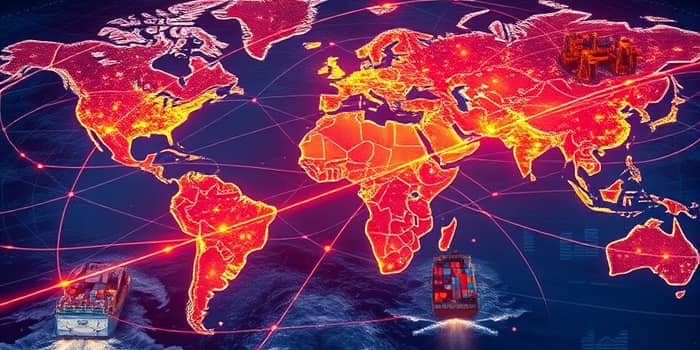
In mid-2025, global supply chains continue to shape the cost and availability of everyday goods. From semiconductor shortages to soaring transport insurance, persistent pressures ripple from producer to consumer.
Despite years of efforts to build resilience, international trade remains fraught with unexpected blockages. Missile attacks on Red Sea shipping lanes, flooding across European railway networks, and fluctuating trade policies illustrate the new normal of supply chain vulnerability.
Companies face rising global geopolitical tensions and natural hazards that delay shipments and inflate costs. Semiconductor fabricators, already reeling from capacity constraints, now navigate longer lead times and premium freight charges.
Inflation in supply networks has evolved beyond a short-lived anomaly into a persistent inflationary price pressures trend. Consumers, once willing to absorb one-time surcharges, have grown selective and price-sensitive.
Retailers report accelerated brand switching, with shoppers hunting promotions or private labels when price gaps widen. For manufacturers, this unavoidable shift necessitates real-time pricing strategies and tighter margin controls to protect profitability.
In response to global upheavals, many organizations pivot toward more localized sourcing. By fostering closer supplier relationships and shortening transit routes, businesses aim to insulate operations from distant shocks.
Although regionalization can increase unit costs initially, the trade-off for predictable supply and critical supply chain visibility often outweighs price premiums in high-stakes sectors like electronics and automotive.
Investment in intelligent systems has become a key differentiator. Roughly half of supply chain organizations plan to deploy AI and advanced analytics in 2025, using machine learning to forecast demand and detect risk patterns.
By integrating advanced digital analytics platforms, companies can optimize inventory buffers, recommend alternate routes, and negotiate dynamic rates with carriers. Yet, the promise of technology collides with a severe talent deficit: nearly 90% of leaders cite insufficient skilled staff to realize digitization goals.
Supply chain executives scrutinize every dollar spent to combat rising logistics bills, estimated at $2.3 trillion in the U.S. alone. "Cost-to-serve" analyses enable precise allocation of transportation, warehousing, and service charges across customer segments.
However, long-term strategic resilience planning often stalls when boards lack deep understanding of supply chain dynamics, leaving critical risks unaddressed until the next disruption hits.
To counter supplier-driven price hikes, retailers are rapidly expanding private label offerings. In mid-2025, almost six in ten retailers leverage store brands to bolster margins and secure shelf presence.
Consumers attracting toward private labels often cite comparable quality at lower prices, forcing traditional CPG companies to innovate or lose share amid structural cost-to-serve analysis pressures.
The challenges of 2025 underscore the need for holistic risk management. Companies that combine regional sourcing, agile digital platforms, and empowered workforces will lead the next wave of competitive advantage.
Boards must deepen their engagement with operational teams, adopting formal processes to monitor lower-tier suppliers and critical material flows.
By embracing long-term strategic resilience planning and investing in both technology and talent, businesses can navigate ongoing instability and deliver reliable access to goods at sustainable prices.
As global supply chains evolve in the face of inflation, protectionism, and digital transformation, stakeholders across industries must adopt integrated strategies that balance cost, speed, and reliability. Only through proactive adaptation and clear-eyed investments will companies secure the steady supply of products that economies and consumers demand.
References













